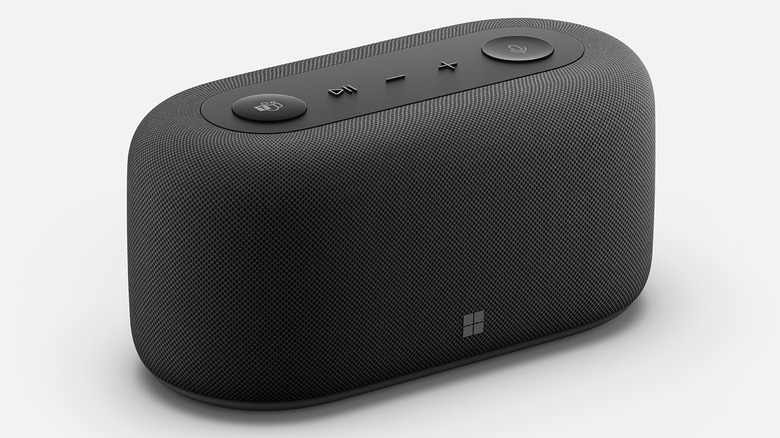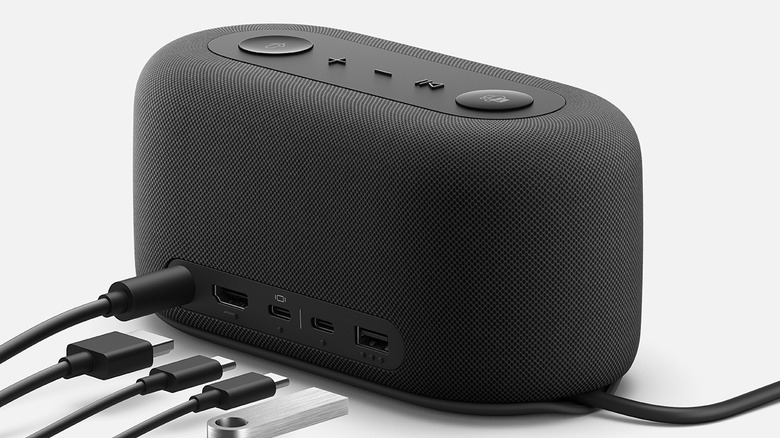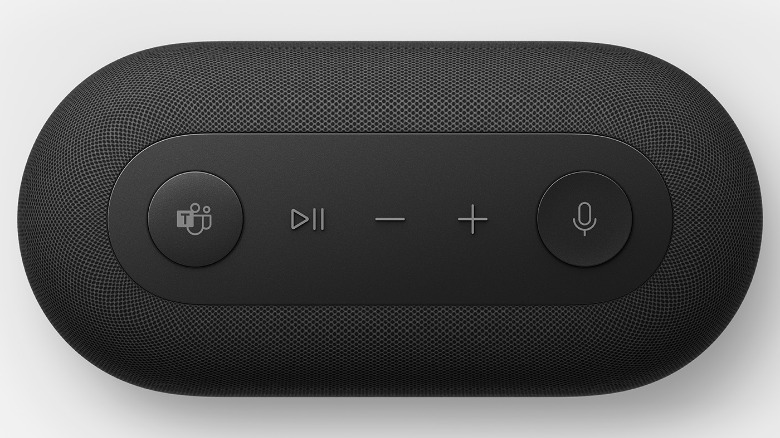Microsoft Audio Dock Is Coming For Your Shady Laptop Mic
Microsoft's fall hardware launch schedule wasn't all about modest iterative upgrades like the Surface Pro 9 and the Surface Studio 2+ all-in-one PC. The software giant also introduced a new device called the Microsoft Audio Dock, which essentially combines the company's Modern USB-C speaker and the Surface Dock 2. The speaker hub has a mesh design reminiscent of the Nest Audio speaker; it hides an Omnisonic speaker assembly that includes a 15-watt woofer and 5-watt tweeters that promise up to 90dB of raw audio output. Microsoft claims that it covers frequencies in the range of 70Hz to 2KHz for music playback and calling.
On the back is a healthy selection of I/O options, which includes a USB 3.1 Type-C Gen 2 port that can support two external screens and also provides 7.5-watts' worth of power output. The other Type-C port is for data transfer only and can juice up other devices at 7.5 watts. There's a single USB-A (version 3.1 Gen 2) and an HDMI port that can drive two 4K screens running at 60Hz. It also offers support for USB-C Power Delivery (PD) charging at 60 watts. Microsoft's speaker-hub hybrid is compatible with both Windows and macOS machines. However, the software-side compatibility is rather limited.
Better calling and less clutter for remote workers
Microsoft's official press material only mentions support for Teams, Zoom, and Google Meet. There is no word on whether the model will support conference calls over more professional tools like Webex. Of course, Microsoft notes that this is a Teams-certified device, which means the experience will be best if you conduct business over the company's own collaboration software.
Available only in a single matte black shade, the Microsoft Audio Dock connects to a PC via a USB-C port. For audio calls, Microsoft has armed its speaker with a pair of omnidirectional mics that also come with noise-reduction tricks to boost clarity. To handle audio playback, the company has put dedicated controls for volume adjustment, playing, and pausing along the top. As a neat convenience, the engineering team turned the mic button into a backlit control, ensuring that meeting participants are fully aware of whether their audio is enabled or if they're muted.
The idea behind the device is interesting as well as convenient, but the speaker isn't a full-fledged hub replacement. If you want something more fleshed out, you'll have to splurge more on Microsoft's own Surface Dock 2, which has more USB-C and USB-A ports and also adds a Gigabit Ethernet port to the mix. If you're looking for speaker-hub alternatives from other brands, you can check out the Logi Dock by Logitech and the HP Thunderbolt Dock 230W G2. The Microsoft Audio Dock will run $249.99, though Microsoft hasn't given us specific release details yet.


